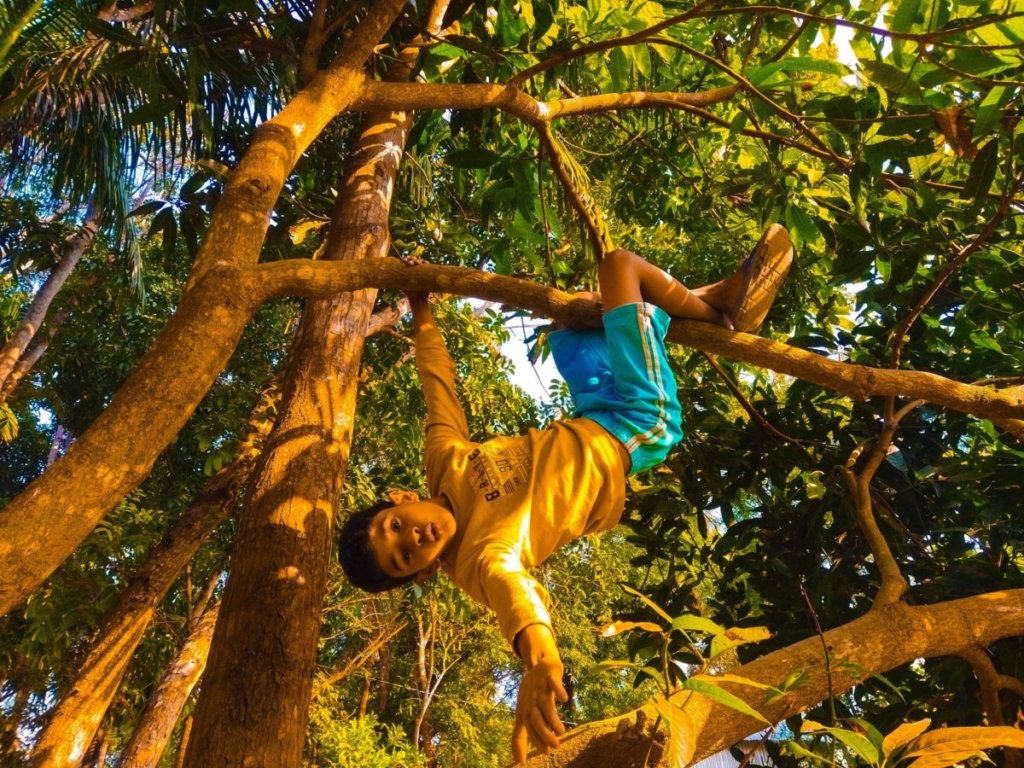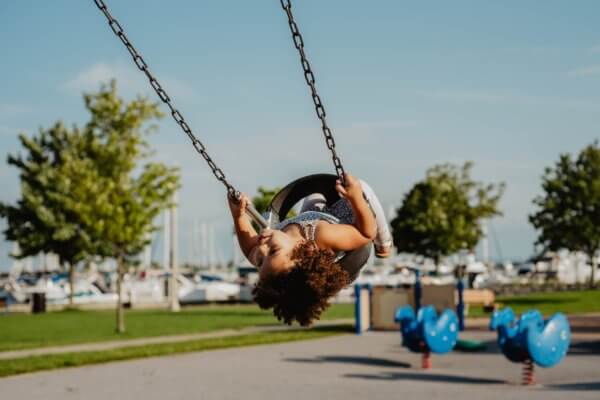Embracing Risky Play with Young Kids
I recently read an excellent article from Psychology Today called “Risky Play: Why Children Love It and Need It.” After reading the article, I found myself reflecting on how I have and have not embraced risky play with the children in my care. As a nanny, our number one job is to keep kiddos safe, but there are so many benefits of risky play. How can we balance the benefits of that risky play with our responsibility and focus on safety?
What is risky play?
I think the phrase risky play is self-explanatory, but here’s how I really know if something is risky play or not: when my stomach drops a bit as I watch the kiddo doing it. It’s hard not to worry and even catastrophize when we see children climbing too high (for us), running too fast (for us), or playing too rough (again, for us). I think many nannies and parents have that ‘sixth sense’ that kicks in, making you pause mid-conversation to get eyes on a child doing something we deem risky or scary. Of course, the concern from our adult perspective is that the child could or will get hurt from this risky play.
Why embrace risky play?
Of course we don’t want the children we care for to get hurt, so why would we possibly want to encourage risky play? As Peter Gray, PhD sums up so nicely in the article mentioned above, risky play has emotional regulation benefits and teaches children “how to regulate fear and anger.” That’s a huge goal of Positive Discipline and social-emotional learning! Children learn to “manage their fear and overcome it.” How can we teach risk assessment if children aren’t allowed to take risks? Lots of risky play activities build gross motor skills & strength as well as strengthening the vestibular system and proprioception. Perhaps even more importantly, it is thrilling and fun for children to embrace risky play.

How do we embrace risky play?
As a nanny, this is a really delicate, tricky topic. We want the best for the children in our care and have goals for life-skills that we want to see them achieve which could benefit from risky play, but we also worry about liability, ‘getting in trouble,’ or even being fired because a child gets hurt while they’re in our care. This is a tricky one to reconcile, and I understand why many caregivers would lean toward not allowing any risky play. I have been able to warm-up to riskier play as I’ve nannied though, and here’s the number one reason why: communication. Be up-front and open with your nanny family about this. Share that great article about the benefits of risky play! Get specific and ask what the family is and isn’t comfortable with play-wise. I have had very detailed conversations with my nanny family about what they allow and don’t allow at the playground so that we can be on roughly the same page. I have had parents tell me, “we’d never blame you for something that happened at the playground,” which is an excellent feeling, but I also know nannies who have worked for families who are very concerned and critical about every tiny scratch or bump that happens during the day. Being clear and getting on the same page about expectations around risky play is key.
Make sure to communicate when there are injuries, as well. Children get hurt while playing; it’s inevitable, even if you are being cautious and caring. When a child in my care is hurt, I always snap a pic and send it to my nanny fam detailing what happened, where, and what first-aid or care was given. Nobody likes a surprise bump or bruise at hand-off, and it’s better to report things as they are fresh in your mind. All nannies should stay current on their CPR and First-Aid certifications.
Meet them where they are
Children are constantly growing and changing which also means they are trying new things and new skills. I try to support their autonomy by not assuming that I know more about their body than they do. Within reason, I trust that they know what they are capable of. When kiddos are doing something that seems risky to me, I stand close by, take a breath and stay calm. If they’re seeing us freak out, that’s going to freak them out! I may ask something like, “what’s your plan here, bud?” Or “how can you climb down safely?” I try not to swoop in and ‘rescue’ them just because it makes me a little uncomfortable to see them being risky. That being said, of course, we are the adult in the situation and you should immediately stop a child when they are no longer in risky play territory and are doing something that is truly unsafe. I try to reserve saying “no” and “stop” for things that truly are dangerous or absolutely inappropriate so that my nanny kiddos don’t tune it out (tell them what to do, instead)! Knowing the line between risky and dangerous comes from your instincts & experience, knowing your nanny children well, and being open and communicative with your nanny family.
Make sure your nanny kiddos know and understand the rules when they are with you. Children are flexible and can understand that you, their family, their school, and other adults all have different expectations. Involve them in discussing what is safe and fair to them, and stay consistent. My nanny kiddos and I brainstormed, agreed on, wrote down, signed, and hung up new playground rules for the summer so that we could all be on the same page. We have both general rules that we “stay safe” and “take care of each other,” but we also have super specific guidelines including a whole section on what we may and may not use sticks for at the playground because this was something that was coming up frequently. Agreeing ahead of time on safety rules keeps it from being a discussion every park trip.
While embracing risky play may be extra challenging as a nanny, it would be a disservice to the children we care for if we don’t. There are too many benefits to ignore, and risky play truly is a key part of childhood and many fond memories. Start that conversation with your nanny family and see how a little added risky play adds excitement to your day!





Comments